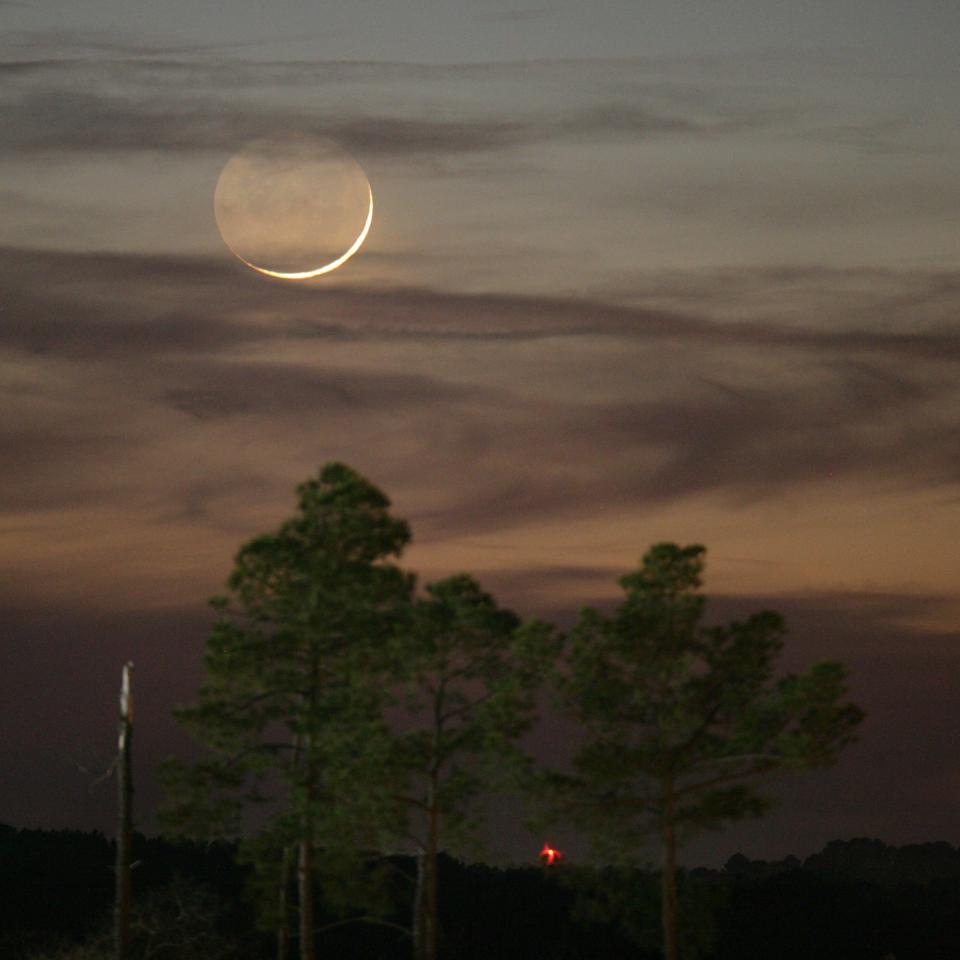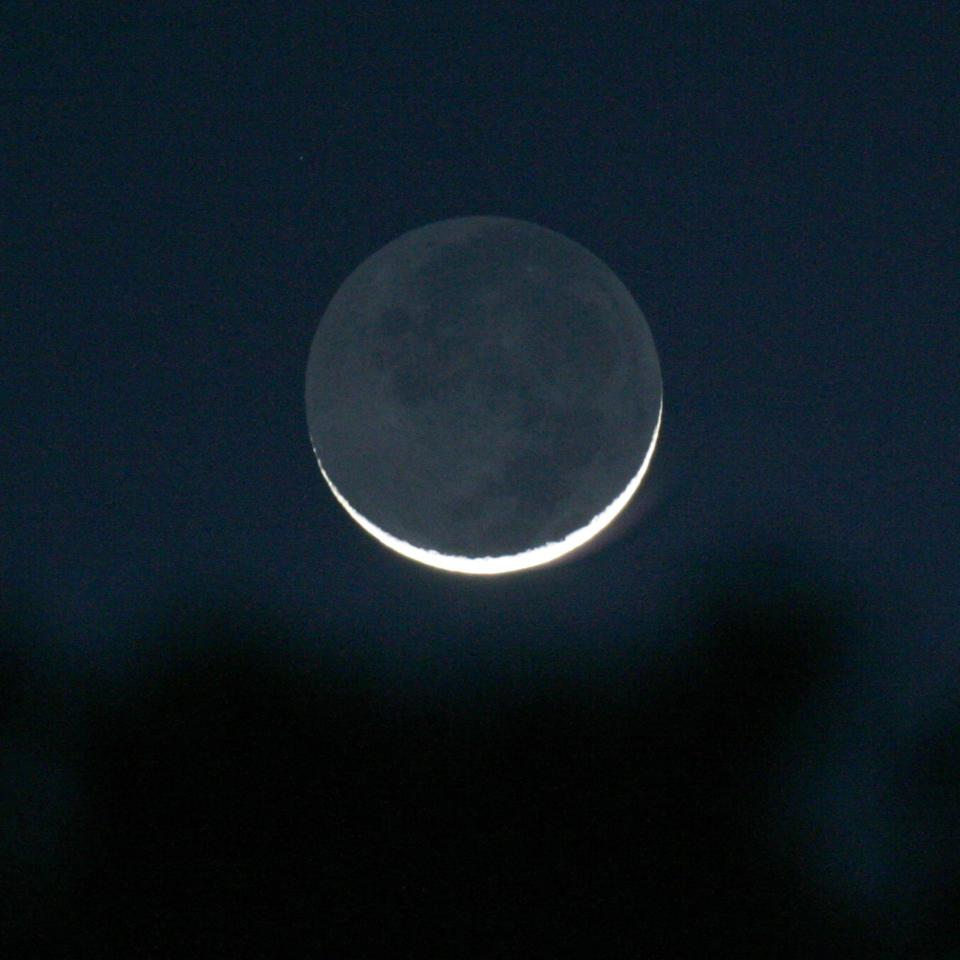The 'da Vinci' glow, or 'Earthshine' is coming soon. What is it?
- Oops!Something went wrong.Please try again later.
Get ready: The moon and its "da Vinci glow" are coming to an evening or morning sky near you this week.
Also known as "Earthshine," the spooky phenomenon only happens when the moon is a thin crescent in the sky. It can be seen during the first and last days of the moon’s orbit around Earth. Although it's also visible in the mornings, it is easiest to look for the glow in the evenings.

What is Earthshine?
Earthshine happens whenever there's a crescent moon on the horizon at sunset, according to NASA. It's the faint image of the full moon visible next to the portion of the moon lit by the sun.
Also known as the moon's "ashen glow" or the "old moon in the new moon's arms," Earthshine is earthlight reflected from the moon's night side, NASA said.
Sunlight hits the Earth, bounces to the moon and then enough bounces back to us to be able to see the full image of the moon. Since the light that generates Earthshine is reflected twice – once off the Earth’s surface and then off the moon’s surface – this light is much dimmer than the lit portion of the moon, according to timeanddate.com.
Why is it called a "da Vinci glow?"
For thousands of years, humans marveled at the beauty of the glow on the crescent moon's surface. But what was it? No one knew until the 16th century when Leonardo da Vinci figured it out.
Da Vinci determined that sunlight reflected from Earth was responsible for the image. He did have a few facts wrong, especially that the Earth's oceans were the primary source of Earthshine. Actually, it's clouds.

As it turns out, the thinnest crescents exhibit the brightest Earthshine.
Who was Leonardo da Vinci?
While best known for his artistic talent, da Vinci is also recognized for his achievements as a scientist and inventor, according to The Metropolitan Museum of Art. Born in 1452, he trained as a painter and sculptor in Florence, creating famous pieces such as the Mona Lisa and The Last Supper.
When and how can I see the da Vinci glow?
The da Vinci glow is best seen a few days before and after a new moon, right after sunset or before sunrise, according to timeanddate.com. This month's new moon occurs Friday May 19.
The da Vinci glow is best seen with either the unaided eye or using any pair of stargazing binoculars or a good small telescope, Live Science said.
When is the next full moon?: The 'strawberry' moon is June 3.
Contributing: Cheryl McCloud, Treasure Coast Newspapers; Marina Johnson, the Detroit Free Press
This article originally appeared on USA TODAY: Da Vinci glow and Earthshine coming to a moon near you.

